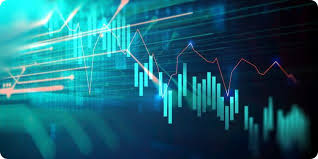
Mastering Crypto Trading Technical Tools: A Complete Guide
The world of cryptocurrency trading is both exciting and daunting. One of the most critical aspects of successful trading is the use of technical tools that can help traders analyze market trends, identify entry and exit points, and make informed decisions. In this article, we’ll delve into the most essential crypto trading technical tools that can enhance your trading strategy and improve decision making in the volatile cryptocurrency market. For a further reading on the topic, you can check out Crypto Trading Technical Tools https://www.newsvoir.com/index.php?page=3257.
Understanding Technical Analysis
Technical analysis (TA) is the study of past price movements in order to forecast future price action. Traders rely on various indicators, chart patterns, and volume analysis to make trading decisions. One of the core tenets of TA is that history tends to repeat itself, so studying past trends can provide valuable insights into potential future movements.
Key Technical Indicators
Indicators are mathematical calculations based on the price, volume, or open interest of a security, providing insights into market conditions. Here are some of the most popular technical indicators used in crypto trading:
- Moving Averages (MAs): This indicator smoothens price data to create a trend-following indicator. The two main types are the Simple Moving Average (SMA) and the Exponential Moving Average (EMA). MAs help traders identify the direction of the trend, with crossovers between different MAs often signaling potential buy or sell opportunities.
- Relative Strength Index (RSI): The RSI measures the speed and change of price movements. It ranges from 0 to 100 and is typically used to identify overbought or oversold conditions. An RSI above 70 indicates an overbought condition, while an RSI below 30 suggests oversold conditions.
- Moving Average Convergence Divergence (MACD): This trend-following momentum indicator shows the relationship between two moving averages of a security’s price. The MACD is calculated by subtracting the 26-period EMA from the 12-period EMA. Traders look for signal line crossovers and divergence to make decisions.
- Bollinger Bands: This indicator consists of a middle band (the SMA) and two outer bands, which are standard deviations away from the middle band. Bollinger Bands help traders identify potential price volatility and overbought or oversold conditions.

Chart Patterns and Their Importance
In addition to indicators, chart patterns are essential for technical analysis in crypto trading. Recognizing these patterns can help traders gauge market sentiment and make informed decisions. Here are some common chart patterns:
- Head and Shoulders: This reversal pattern suggests a change in trend from bullish to bearish or vice versa. The pattern consists of three peaks: a higher peak (head) between two lower peaks (shoulders).
- Triangles: Triangles can indicate continuation or reversal patterns. Ascending triangles suggest bullish sentiment, while descending triangles indicate bearish sentiment.
- Flags and Pennants: These are continuation patterns that typically form after a strong price movement. Flags are rectangular-shaped, whereas pennants are small symmetrical triangles.
Volume Analysis: Understanding Market Strength
Volume is another vital component of technical analysis. It represents the number of coins traded in a specific time frame and can help traders understand market strength and potential price movements.
High volume during a price increase indicates strong buying interest, while high volume during a price decrease signifies strong selling pressure. Conversely, low volume during a price movement may suggest a lack of conviction among traders, making the movement less reliable.
The Role of Charting Software
To effectively utilize technical tools, traders need reliable charting software. Many platforms, such as TradingView, Coinigy, and CryptoCompare, provide a plethora of charting options, indicators, and tools for analysis. Features to look for include:
- Customizable chart types (candlestick, line, and bar charts)
- Multiple time frames to look at (1 minute, hourly, daily)
- Access to various indicators and drawing tools
- Backtesting capabilities to assess trading strategies

Algorithmic Trading and Bots
Another modern approach to crypto trading involves algorithmic trading and the use of trading bots. These tools can execute trades based on predefined criteria, helping traders take advantage of market opportunities without needing to monitor the market constantly.
Here are a few benefits of using automated trading tools:
- Speed: Bots can execute trades much quicker than a human, allowing you to act on market movements instantly.
- Emotionless Trading: Bots remove the emotional aspect of trading, helping to stick to the trading plan without being swayed by fear or greed.
- Backtesting: Many trading bots allow users to backtest their strategies against historical data to see how they would have performed in the past.
Risk Management Tools
Effective risk management is crucial in trading, especially in the highly volatile cryptocurrency market. Traders often use Stop-Loss and Take-Profit orders as essential risk management tools.
- Stop-Loss Orders: These orders automatically close a position at a predetermined price to limit potential losses.
- Take-Profit Orders: These orders secure profits by closing a position once the price reaches a specified level.
Final Thoughts
Crypto trading technical tools are indispensable for both novice and experienced traders. From understanding key indicators and chart patterns to leveraging automation and risk management, these tools can significantly enhance your trading strategy. It is important to combine these tools with sound trading strategies and thorough research to increase your chances of success in the fast-paced cryptocurrency market. As with any form of investment, always approach trading with caution and a well-planned strategy.


